Good planning is essential to launching, growing, and ultimately succeeding as a company. That planning includes setting key goals and milestones that your organization must hit along the way.
Whether they are part of specific projects or meant to track the organization’s growth as a whole, milestones are landmarks or waypoints for measuring performance and progress based on previously specified requirements. They enable you to track results, manage responsibilities, and revise tactics as needed to reach your goals.
With project management, milestones help everyone involved visualize how and when things will happen as the project timeline unfolds. Essentially, milestones act as checkpoints that break up the project timeline into stages comprised of smaller, more manageable goals.
A milestone chart creates a high-level view of the tasks your team needs to complete throughout the project schedule. This is important because people are primarily visual learners. By using a chart to track project milestones, team members have an easier time processing and retaining complex information.
In this article, we will break down what constitutes a project milestone and how to measure progress in a milestone chart. We will also cover various ways to create milestone charts for business, including using MindManager® to visualize your progress towards key milestones.
What is a project milestone?
To understand what a project milestone is, let’s first start with what it is not. People tend to confuse milestones and goals, but these are two distinct concepts, at least in regard to project management.
Specifically, tracking project milestones helps you evaluate your progress toward your objectives, whereas goals are what you aim to achieve in the future. Think of it this way—if you are traveling by car from one city to another, your final destination is the goal. The signboards you see on the side of the road every few miles indicating the remaining distance to the next exit are the milestones.
Different types of milestones in project management include:
- Project approval. Often, the first milestone in a project is the approval to start work. This occurs in the early stages of the project during which the team obtains the go-ahead from managers and other stakeholders.
- Review of requirements. After project approval, the next milestone is typically a review of the project’s plan to determine its requirements. These are the features, functions, and tasks required for project success. Once you have reviewed the project plan and requirements with the clients and received their approval, you have completed this project milestone.
- Design approval. The project’s design includes its processes, resources, and output. After the team creates the design of the project output (such as the design of an app, item, or website), it is presented to the client and other key stakeholders for review.
- Critical tasks. Milestones can indicate the completion of critical tasks and processes. These are the activities that are highly important to the overall project, can be used to measure the project’s success, and can impact the project’s completion if their deadlines are not met.
- Testing. Testing is an important component of digital projects to ensure quality and safety. For example, you might need to check that the security, electrical, or IT system functions correctly or that all the links, forms, and other user inputs work properly.
- Project completion. When the team has finished all tasks, met all deadlines, and developed all products, you can consider a project complete. For this important milestone, clients or stakeholders review the entire project to ensure it meets requirements before approval.
How to track progress in a milestone chart
Setting milestones is critical for project management because they keep teams aligned with the project plan and schedule. A milestone chart drives effective communication by giving team members a highly visual way of determining what has been completed and what needs to be done.
Before you create a milestone chart, you first need to create a rough timeline that includes the goals and objectives of the project. Then, identify all the project tasks and the order in which they must be completed. Once you have identified tasks and have an estimate of how long each will take to complete, you can map tasks to milestones.
Remember, milestone charts are meant to enhance project visibility and track progress. As such, not all tasks or subtasks will qualify as milestones. When deciding on project milestones, they should be measured by their significance, impact, and value.
Examples of milestones include tasks, decisions, or events that:
- Impact the project deadline.
- Are important to the project’s overall execution.
- Represent a significant checkpoint for project oversight.
- Can be used to gauge project success.
- Require multiple team members to complete.
Once you have identified milestones, the next step is to determine how they depend on one another. Logical interdependencies exist between milestones, which means you must follow a specific order of events to progress through project tasks and phases.
There are four main types of logical dependencies:
- Start to finish. You cannot finish Task A until Task B starts.
- Finish to start. You cannot start Task B until finishing Task A.
- Start to start. You cannot start Task B until starting Task A.
- Finish to finish. You cannot finish Task B until finishing Task A.
Once these dependencies are defined, you can establish milestones to review the project’s progress with clients and other key stakeholders. This helps everyone understand where the project currently stands and what happens next.
By clarifying the most important steps of your project, a milestone chart keeps your team motivated and helps stakeholders see how the project is progressing. Every time the team checks off a milestone, you are that much closer to completing the project.
Different ways to create milestone charts
There is no one standard way to create a milestone chart. It can be as simple as drawing on a white board and adding sticky notes to signify milestones, or as complex as using software to create an interactive visual diagram. However, you can also use visual tools and mind mapping software to enhance the clarity and structure of a simple milestone chart.
Timelines
A timeline is an easy way to get an expansive overview of tasks, deadlines, and deliverables. Timelines can flow horizontally from left to right or vertically from top to bottom. Either way, they represent a series of events that take place over a defined period of time.
MindManager has a variety of pre-installed templates to choose from, including timelines. To get started, open MindManager and click “New” in the navigation menu to open the templates menu. Select the timeline template and click “Create Map” in the preview screen that appears.
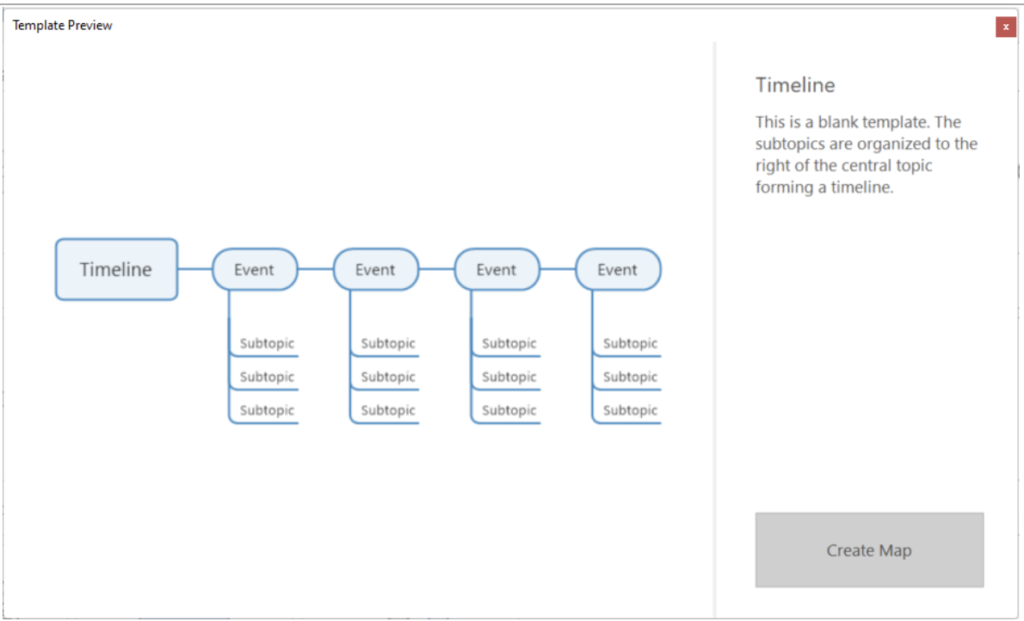
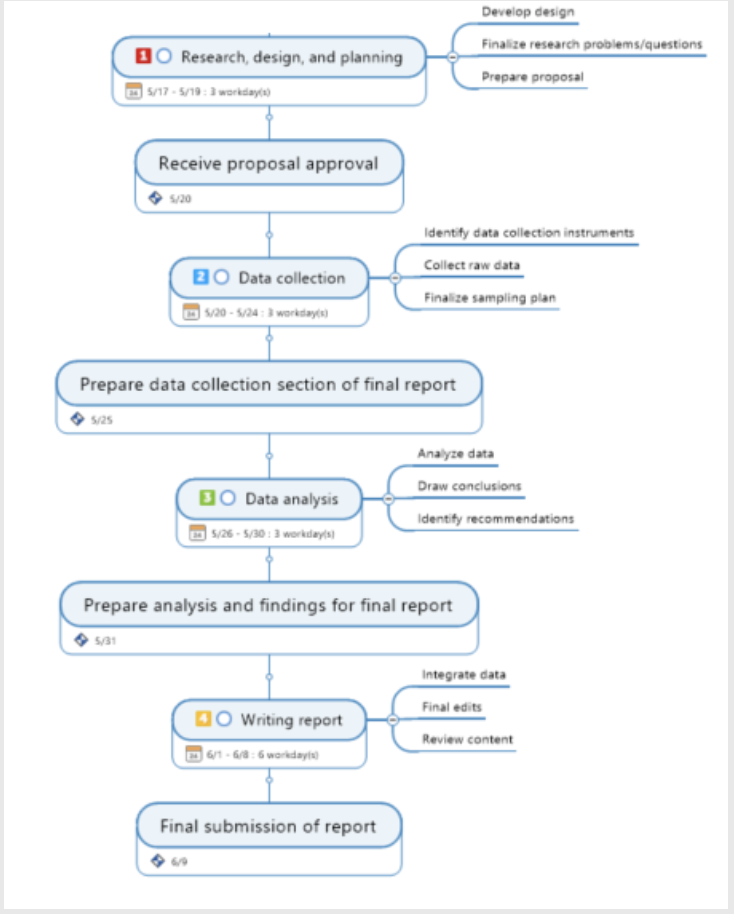
Gantt chart
A Gantt chart shows key project milestones as well as the sequence of events. In its most basic iteration, a Gantt chart uses a horizontal and vertical axis to mark the tasks associated with the project and the project’s schedule. A horizontal line or bar represents a single task, clearly visualizing its start date, end date, and duration.
MindManager makes it easy to build a milestone chart using Gantt charts. To start, select the project plan template.
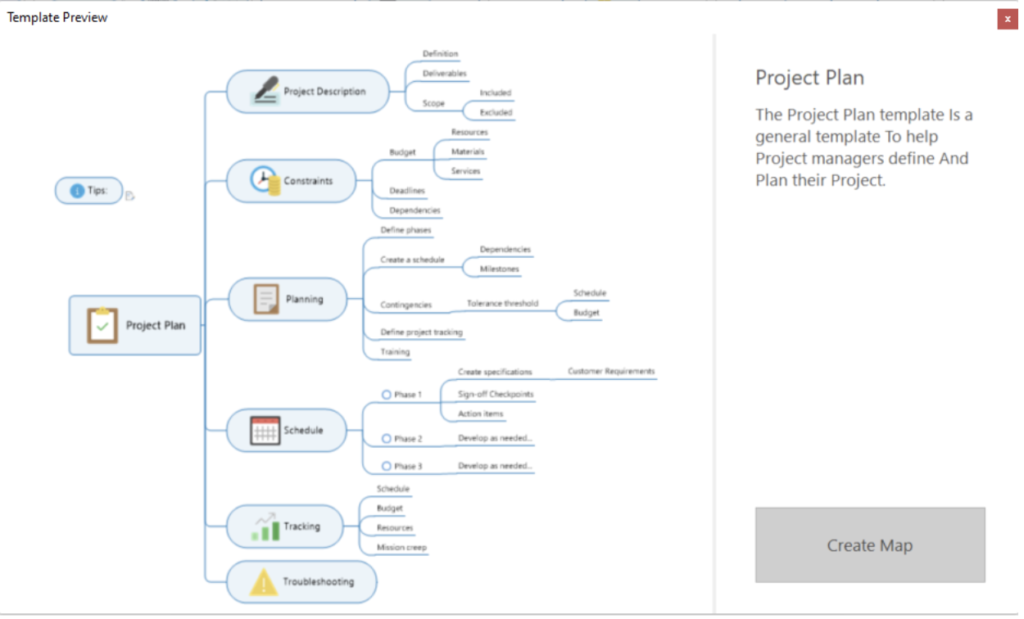
Then, add the relevant tasks, dates, durations, dependencies, and milestones.
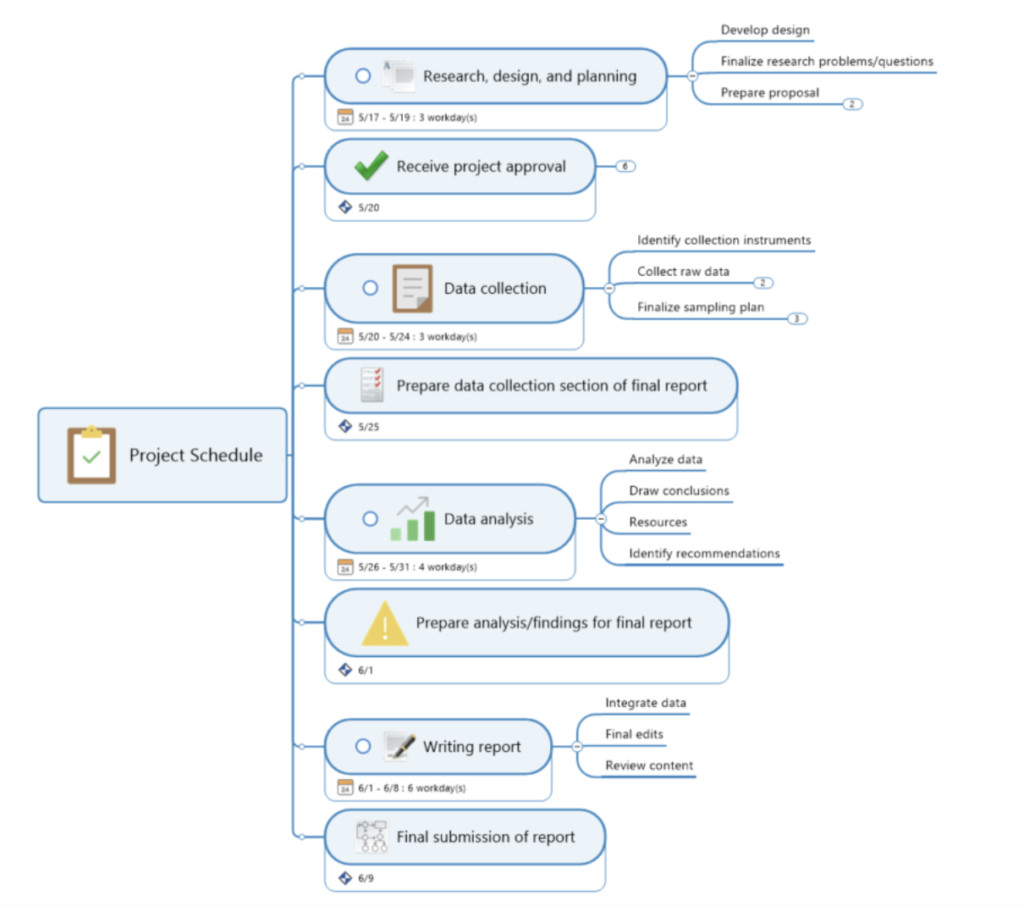
Next, navigate to the “View” option in the top ribbon and select “Show Gantt Pro.” A new window will open showing the Gantt chart format.
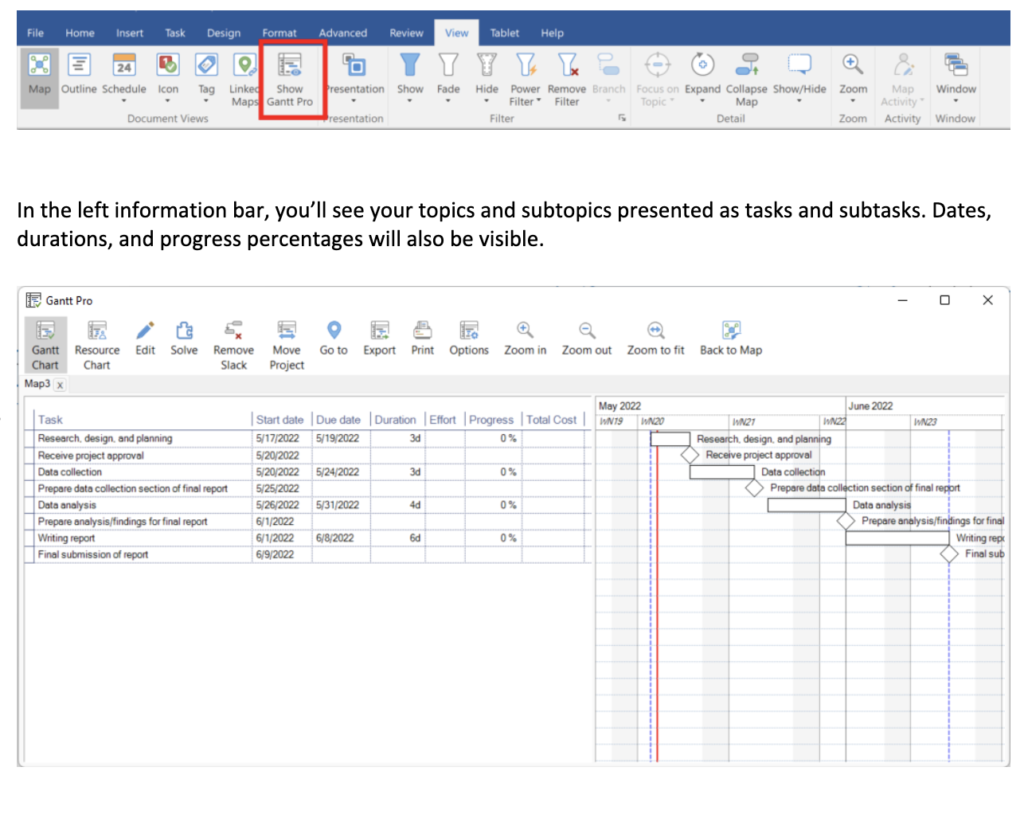
The task’s duration is indicated by the length of the horizontal bar. Should any of the bars overlap, this would indicate that the tasks occur simultaneously. The diamond shapes represent your project milestones.
As key performance indicators (KPIs), milestones help enhance project management by demonstrating progress towards success. They also enhance visibility for stakeholders by creating a quick, high-level view of your project’s status.
One of the best ways to improve milestone management is by leveraging MindManager’s customizable templates to create milestone charts. MindManager was recently recognized by TrustRadius as a top-rated provider of project management, mind mapping, and diagramming software, so it is a proven solution for tracking milestones and more.
Thanks to a centralized dashboard, MindManager makes it easy to link and attach documents directly to your charts and diagrams. . You can also add links to resources or tags to topics, establish priority markers, and filter your milestone chart to see the information you need right when you need it.
Discover why teams turn to MindManager for milestone project management. Try it free for 30 days.

